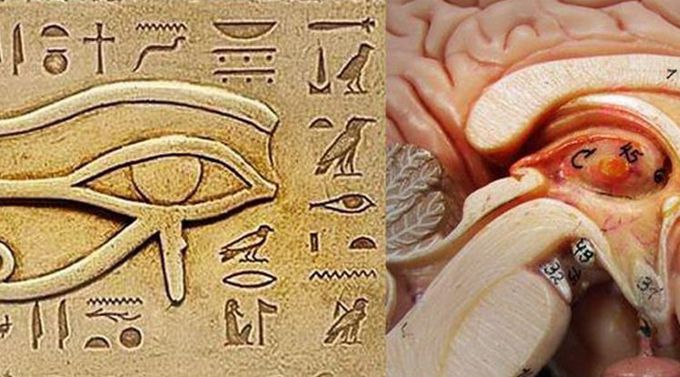


Amazing story (Eye of Horus)
Ancient Egyptians mastered the integration of anatomical knowledge and mythological stories into artistic symbols and figures. Artistically, the Eye is comprised of six different parts. Mythologically, each part is considered to be an individual symbol. Anatomically, each part corresponds with the center of a particular human sensorium. For many years, the Eye of Horus was considered as a symbol of prosperity and protection by the ancient Egyptians, and its legacy continued into modern Egypt as well [2-3]. However, with a closer look at its artistic design and understanding the epic story behind its creation, the Eye’s current perception as a singular mythologic symbol will be transformed into a powerful example of the ancient Egyptians’ detailed understanding of human anatomy and physiology. Ancient Egyptians were pioneers in art and medicine. This is exemplified in the artistic measurements of the Eye of Horus. The Eye of Horus fragments were organized together to form the whole Eye, similar to the myth, and these fragments were given a series of numerical values with a numerator of one and dominators to the powers of two: 1/2, 1/4, 1/8, 1/16, 1/32, and 1/64 [10-12, 14, 16]. Some historians suggested that each part of the eye represents one of the six senses: smell, sight, thought, hearing, taste, and touc
It is dajal eye ,son of man"12emmam,,mahdy aj"&son of god truth absolut ,یا مهدی ادرکنی


